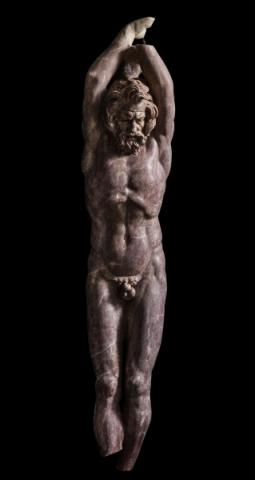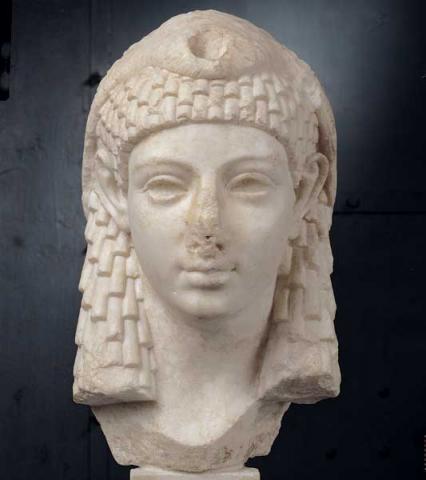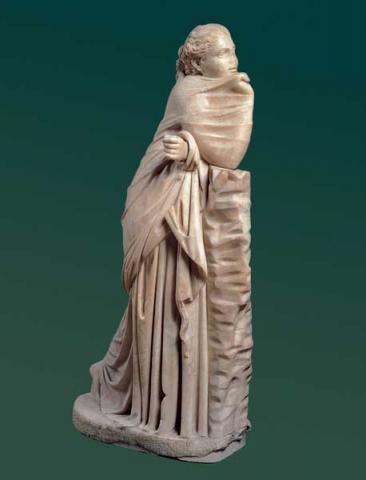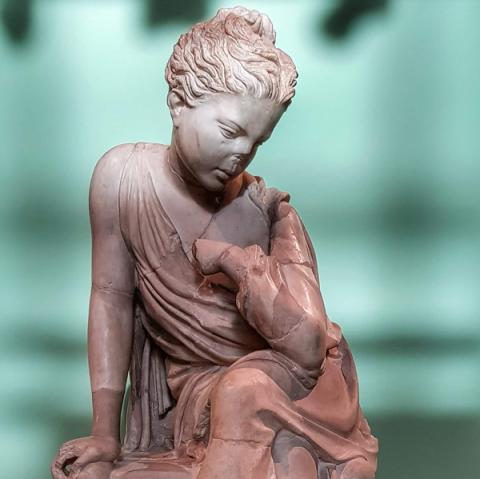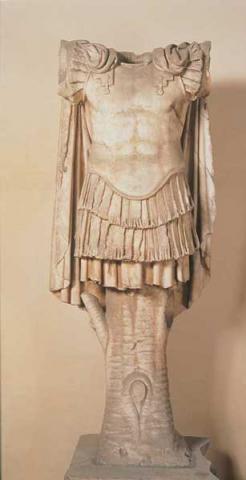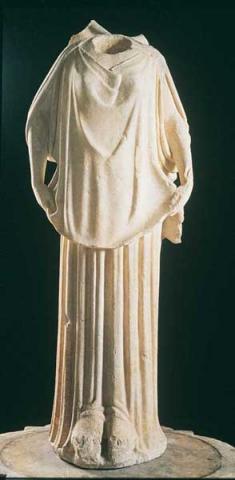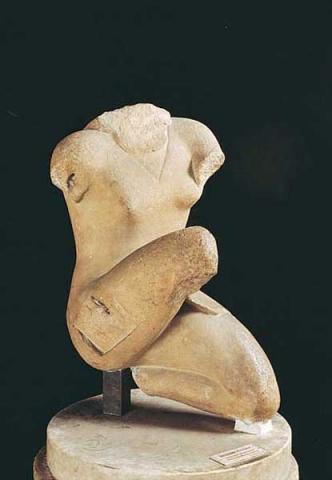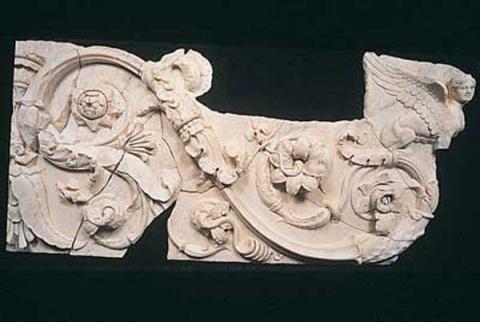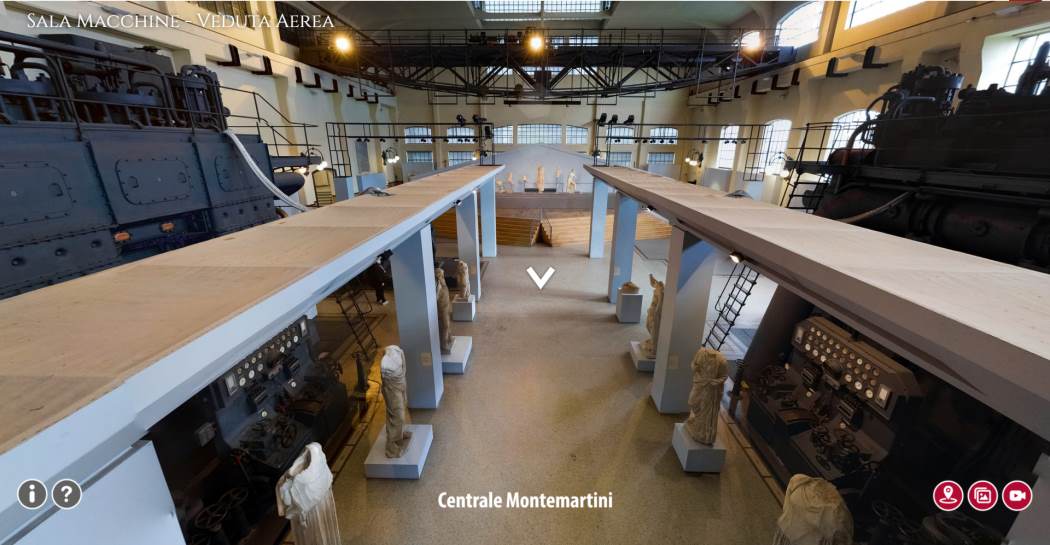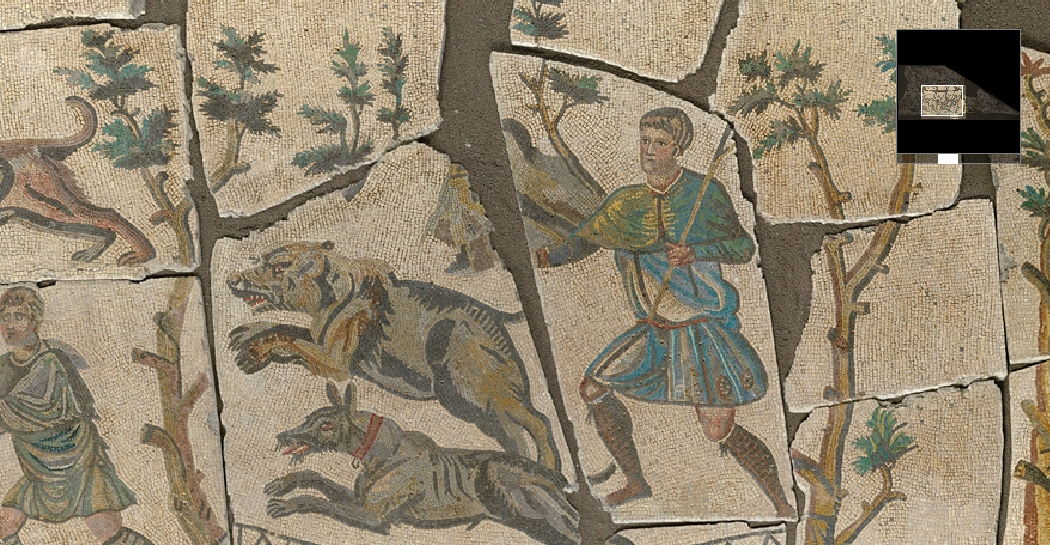Gardens of Sallust
This residential complex, previously owned by Caesar, then by the historian Sallust, and then by his great-nephew, became part of the imperial property in 20 AD, and was developed into three great terraces in what is now the Ludovisi zone.
The remains of the gardens’ rich decorative apparatus is divided among various Italian and foreign museums.
On display are several original Greek sculptures, of very high quality, from the temple buildings and a frieze of acanthus spirals with sphinxes, dated to the early Augustan period, which, together with a colossal statue of Apollo, allude to Augustus’ victory at Actium over Cleopatra (and Antony) and thereby over Egypt.
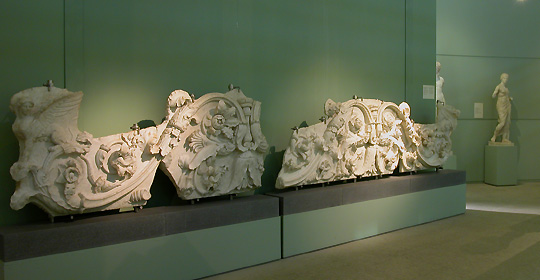
Decorazione frontonale del tempio di Apollo Daphnephóros a Eretria: statua di Amazzone inginocchiata
Sculpture
Late VI century BC


























